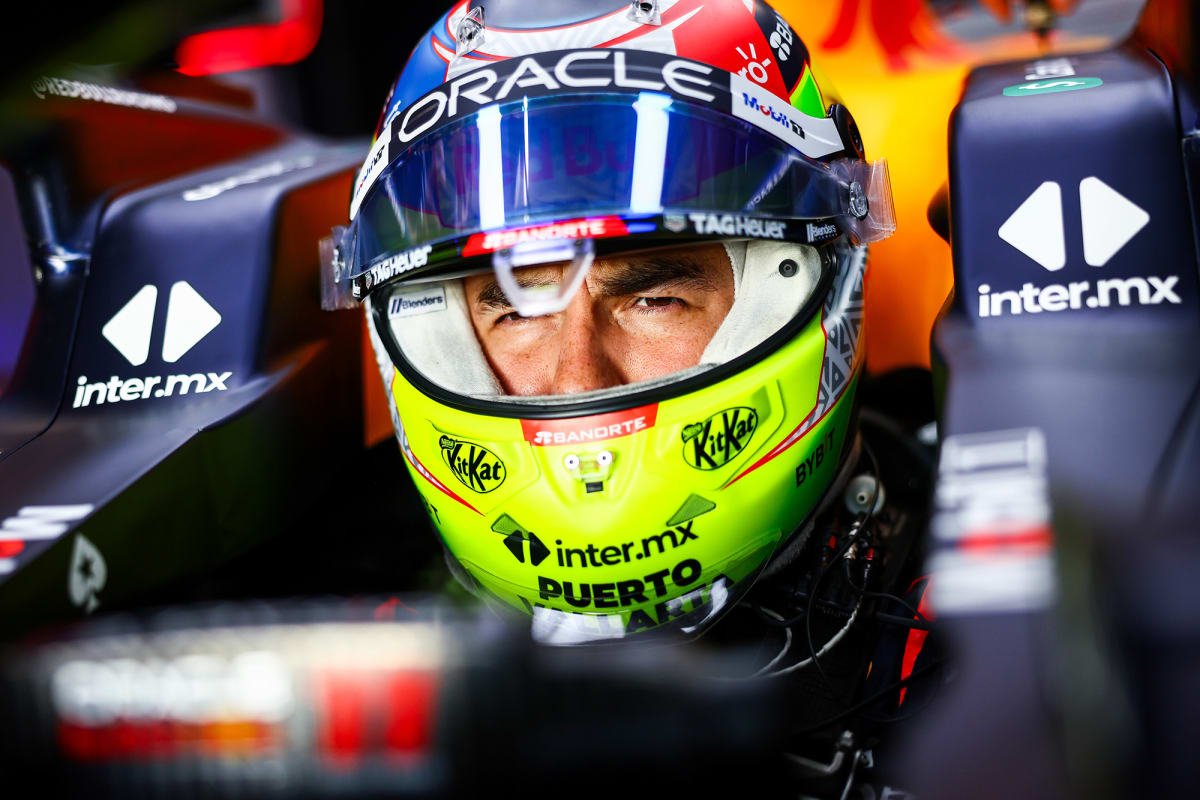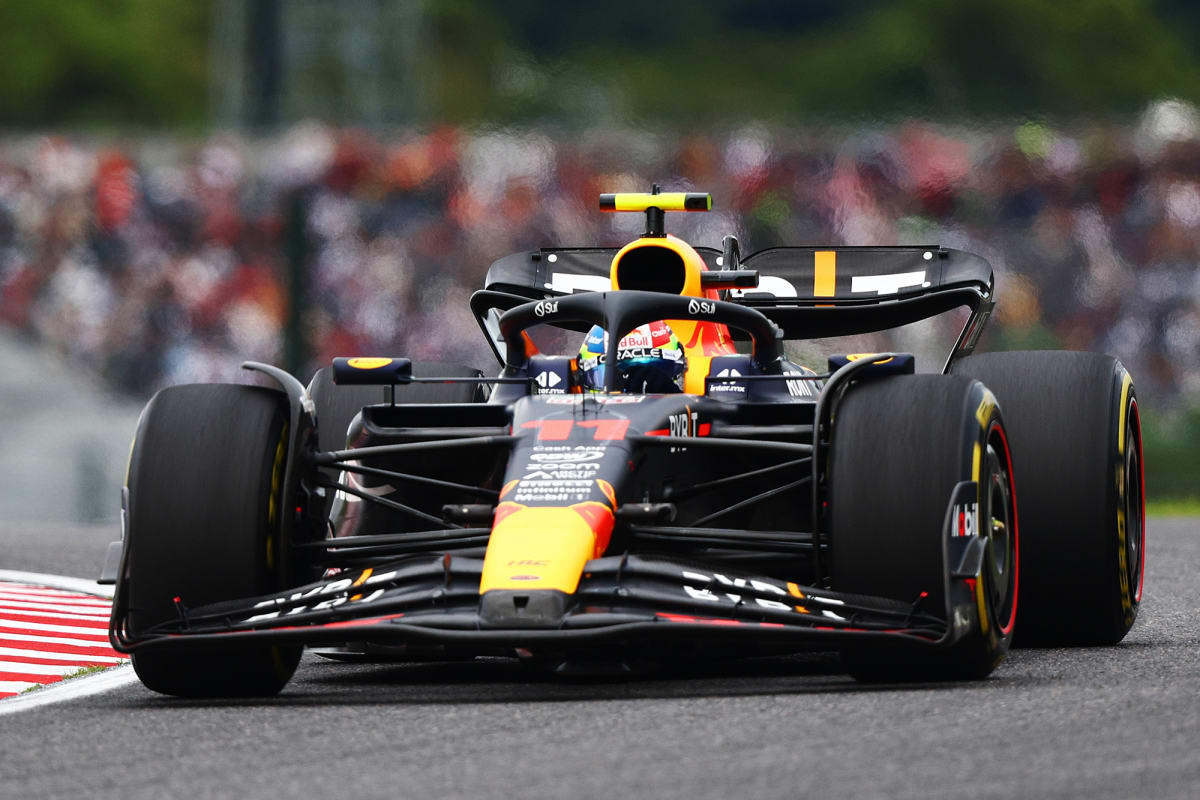Last month Red Bull Racing’s Sergio Pérez joined a very exclusive club: 250 race starts in F1. The achievement, which occurred at the Singapore Grand Prix, has been achieved by only Pérez and 10 other drivers in the 73-year history of the championship.
Pérez’s racing career has been more complex than most. Always considered a promising talent, he got his big break when he joined the Sauber F1 team in 2011. By his second year, Pérez—also known as Checo—had picked up three impressive podium finishes. As a result, he was snapped up by McLaren the following year but was dropped after just a season.
He soon found himself a new home with the Force India F1 team from 2014 and looked very settled and secure. Checo had even signed a three-year contract extension in ’19 and was ready to represent them as they rebranded into Aston Martin for the ’21 season. However, in a shocking twist, he announced that he was leaving the team at the end of ’20 and was left without a future race seat in F1.
Fighting for his career, Pérez then delivered one of F1’s most extraordinary drives in Bahrain. Sitting in last at the end of Lap 1 after being caught up in an incident, Pérez dramatically fought his way through the entire pack to take his first victory. It had taken him 190 races, breaking the record for longest wait for an F1 win, but caught the attention of current constructors’ champion Red Bull Racing. It offered him a seat alongside now three-time champion Max Verstappen, and the rest is history.
Below, Pérez talks about what it’s like having Verstappen as a teammate, the key to Red Bull Racing’s success, how he spends his downtime and more.

Red Bull Content Pool
Sports Illustrated: Sergio, you’ve reached your 250th Grand Prix. Congratulations. Has that time gone quickly or slowly for you?
Sergio Pérez: It has gone quick, I’d say. It’s only when you hit those sort of numbers that you stop and look back: Our lives go so fast. When I saw people before doing that amount of races, I was like, I will never do that many. But I’m happy with the amount of races I’ve done. I wouldn’t like to do another 250, but yeah, plenty more!
SI: In that time there have been so many changes, not just for you but for F1. What’s one change that you really enjoyed and one that you weren’t so keen on?
SP: I think the blown diffusers [used in the early 2010s but banned from ’12 on] really brought the whole field together. That was a positive one. Then the current wet tires that we have don’t allow us to race because of how big the tires are and the amount of water we are spraying out.
SI: You’ve had six wins in your F1 career. What was one of your favorite victories?
SP: I think my first-ever win, which was in Sakhir, Bahrain. It was a very good one because I came from last place to finish first. I had a crash on the first lap, and then coming through the field, it was very special to get my first victory!
SI: You have the phrase “never give up” on your racing helmet. Is that something that you’ve really had to rely on at certain points in your career, and do you have any other mottos that you like to live by?
SP: Yeah, “never give up” is the main one. Definitely. I think if I were to give up, I wouldn’t be here, so I think it’s always good to never give up and work hard.
SI: Your teammate is the current world champion, Max Verstappen. How do you complement each other?
SP: We get on well. We are both sort of similar and have a life outside the sport. We take this sport very seriously, but at the same time we like to enjoy it, and that dynamic has worked well with us. Having Max as a teammate is always a challenge, but also a pleasure. We have a good relationship, and I’m just enjoying my time here. I like to enjoy the present.
SI: You mention a life outside the sport. What does the ideal day off look like for you?
SP: With friends and family. [I don’t get to spend much time in Mexico.] With so many races, commitments and the simulator, you don’t have much time.
SI: You’re also a big dog lover, is that right?
SP: Yeah, I’ve got four dogs. So I have Lucas, Manolo, Enzo and Mateo.
SI: Have you tried to bring them to a race, like Lewis Hamilton does with his dog, Roscoe?
SP: Ha, well, it would be a massive thing to bring them to a race. I brought them to a karting race once, and they were very good and behaved really well. I have an English bulldog, golden retrievers and then a goldendoodle. We bought him because he was very cute when he was little, and we thought like for the kids it was going to be great, but he’s now like a horse!

Red Bull Content Pool
SI: Your home race is coming up at the end of the month. Can you describe what racing in your own country is like in three words? Last season there were reportedly more than 395,000 fans at the Mexican GP all cheering you on.
SP: Tiring, stressful and enjoyable!
SI: There have hardly been any management changes at Red Bull Racing, compared to other teams up and down the F1 grid. Team principal Christian Horner and adviser Helmut Marko have been at the team since Red Bull joined F1 in 2005, with chief technical officer Adrian Newey coming on board a year later. Do you think that consistency is one of the reasons the team is so successful?
SP: Certainly, yes. I think the team is working well, and that when something is working, you don’t need to change anything. I think that’s one of the things that makes this team so successful. Red Bull really goes into a lot of detail. They are very strong in most departments, you know, tires, suspension, aerodynamics. That combination with the engine makes it very, very solid, and there are always things that we keep improving. Even if we win a race, there are so many things that we could do better. That’s what makes Red Bull very special.
SI: You’ve been doing a lot of promo for the Las Vegas race. Most drivers are very excited for it—are you one of them? Can you enjoy the race to the fullest, or will you be as well behaved as you can be?
SP: We’re racing on the Saturday, and it’s also Christian Horner’s 50th so that might be a good party.







